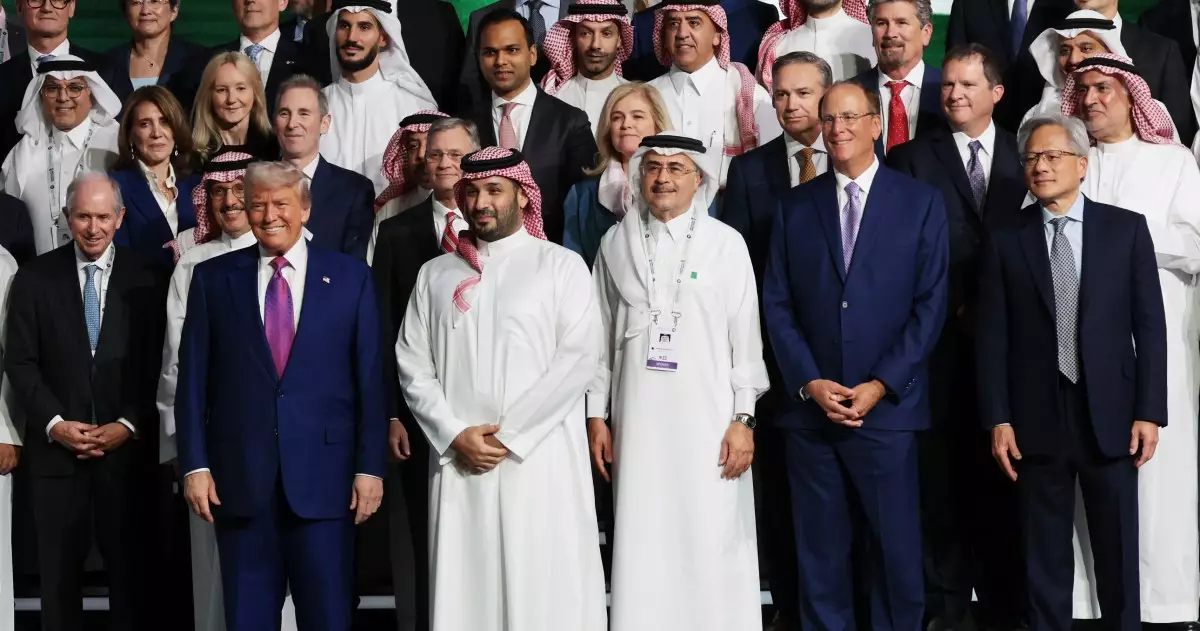In an era defined by technological advancement, few companies have managed to dominate the AI chip market quite like Nvidia. Yet, the landscape is riddled with obstacles and formidable competitors, particularly from emerging players like Huawei. However, recent maneuvers suggest that Nvidia is not only prepared to tackle these challenges but is actively working to dismantle potential threats to its reign. The company’s influence appears to be reaching new heights, thanks in part to strategic alliances and favorable shifts in policy.
Political Backing and Industry Influence
A few months back, as whispers of new regulatory frameworks began to circulate, Nvidia found itself at a crossroads. The introduction of the Artificial Intelligence Diffusion Rule by former President Joe Biden had the potential to severely constrain companies like Nvidia, imposing strict limits on the export of AI chips. The implications were clear: a protectionist approach could hinder innovation and enfeeble American leadership in the AI domain. Yet, with the Biden administration now yielding to the influence of tech titans, including Nvidia’s own CEO, Jensen Huang, the tide has begun to change.
During a recent trip to Saudi Arabia, Huang mingled with significant political figures, including former President Trump, in discussions centered around investments in the AI sector. The undercurrents of this gathering illustrated a renewed collaboration between government and industry, reminiscent of initiatives from earlier political administrations aimed at bolstering American competitiveness. This dynamic interaction between Nvidia and political influencers could pave the way for a more favorable operating environment.
Regulatory Shifts: What’s Coming Next?
The rescinding of the AI Diffusion Rule by the U.S. Department of Commerce (DOC) marks a pivotal moment in the tech landscape. By eliminating burdensome export restrictions that hampered the ability to disseminate technology, the DOC has signaled a willingness to prioritize innovation over protectionism. In their statement about the withdrawal, the DOC emphasized that the original rule, intended to limit access to AI technology for countries like China and Russia, inadvertently jeopardized America’s dominance in the AI chip sector—an acknowledgment that reflects an understanding that a competitive edge requires more than mere restrictions.
Nevertheless, the DOC’s vague assurances regarding future guidelines leave room for speculation. Industry stakeholders have every reason to closely monitor forthcoming regulations. Questions linger about how future rules will safeguard U.S. technology while fostering a competitive landscape free from restraints that could undermine industry growth. As Nvidia continues to hold a staggering 90 percent share of the AI chip market, how the government balances the risks and benefits of technology dissemination remains a key issue going forward.
Aiming at Competitors: The Huawei Dilemma
As Nvidia seeks to consolidate its market advantage, attention quickly turns to Huawei—China’s emerging rival in the AI chip industry. The DOC’s cautionary note regarding Huawei’s Ascend processors serves as a clear warning to American companies: engage with this competitor at your own peril. This proactive stance appears to be a calculated move to deter potential partnerships that may threaten U.S. tech supremacy.
Nvidia’s response to competition is indicative of a broader strategy: rather than merely defending against external threats, Nvidia is on the offensive, working to ensure that its products are not just alternatives but the preferred choice globally. The tech giant’s stronghold appears unshakeable, but never more so than when it is reinforced by regulatory strategies that actively discourage alternatives.
Ravaging Competitors Through Strong Alliances
The collaborative environment fostered among tech leaders at summits like the one in Riyadh illustrates a form of unity rarely seen in the cutthroat tech industry. High-profile figures like Elon Musk and Tim Sweeney alongside Huang possess the ability to shape the future of AI not just through competition, but also through synergies. By aligning interests, these companies can jointly advocate for favorable policies that benefit their sectors while simultaneously shutting out potential threats.
Uniting industry leaders not only enables the pooling of resources but also sends a powerful message regarding the unwavering determination of American companies to lead in AI tech. The ensuing camaraderie may stifle dissent and give way to more favorable operating terms, prolonging Nvidia’s dominance and ensuring sustained innovation. As we witness this dynamic landscape unfold, it remains to be seen how Nvidia will navigate the intricate interplay between competition, regulation, and collaboration, forging a path that may redefine the global AI landscape.


Leave a Reply